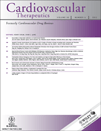Apoptotic Vascular Smooth Muscle Cell Depletion via BCL2 Family of Proteins in Human Ascending Aortic Aneurysm and Dissection
Summary
Aims: This study investigates the expression patterns of BCL2 (B-cell CLL/lymphoma2) family of proteins and the extent of vascular smooth muscle cell (VSMC) apoptosis in thoracic aortic aneurysms (TAA), type-A aortic dissections (TAD), and nondilated ascending aortic samples. Methods: Aortic wall specimens were obtained from patients undergoing surgical repair for TAA (n = 24), TAD (n = 20), and normal aortic tissues from organ donors (n = 6). The expression pattern of BCL2, BCL2L1 (BCL2-like1), BAK1 (BCL2-antagonist/killer1), and BAX (BCL2-associated X protein) proteins was investigated by immunohistochemistry. Furthermore, colocalization of alpha smooth muscle actin (ACTA2) and caspase3 (CASP3) in aortic VSMCs was analyzed by double-immunofluorescence staining. Onset of DNA fragmentation was measured by TUNEL assay. Results: Apoptotic index was significantly increased in both TAD group (31.3 ± 17.2, P < 0.001) and TAA group (21.1 ± 12.7, P = 0.001) relative to control aortas (2.0 ± 1.2). Anti-CASP3 and ACTA2 double-immunostaining confirmed apoptosis in VSMCs in TAA and TAD groups but not in controls. Proapoptotic BAX expression was significantly elevated in VSMCs of TAA patients, compared with that of controls (OR = 20; P = 0.02; 95% CI, 16–250). In contrast, antiapoptotic BCL2L1 expression was higher in controls compared with that of TAA group (OR = 11.2; P = 0.049; 95% CI, 1.0–123.9). Furthermore, BAX/BCL2 ratio was significantly increased in both TAA (1.2 ± 0.7, P < 0.001) and TAD (0.6 ± 0.4, P = 0.05) groups relative to controls (0.2 ± 0.1, P < 0.001). Conclusions: Apoptotic VSMC depletion in human TAA/TAD is associated with disturbance of the balance between proapoptotic and antiapoptotic members of the BCL2 family proteins, which may have a role in the pathogenesis of vascular remodelling in aortic disease. In light of the future studies, targeting apoptotic pathways in TAA and TAD pathogenesis may provide therapeutic benefits to patients by slowing down the progression and even possibly preventing the TAD.




